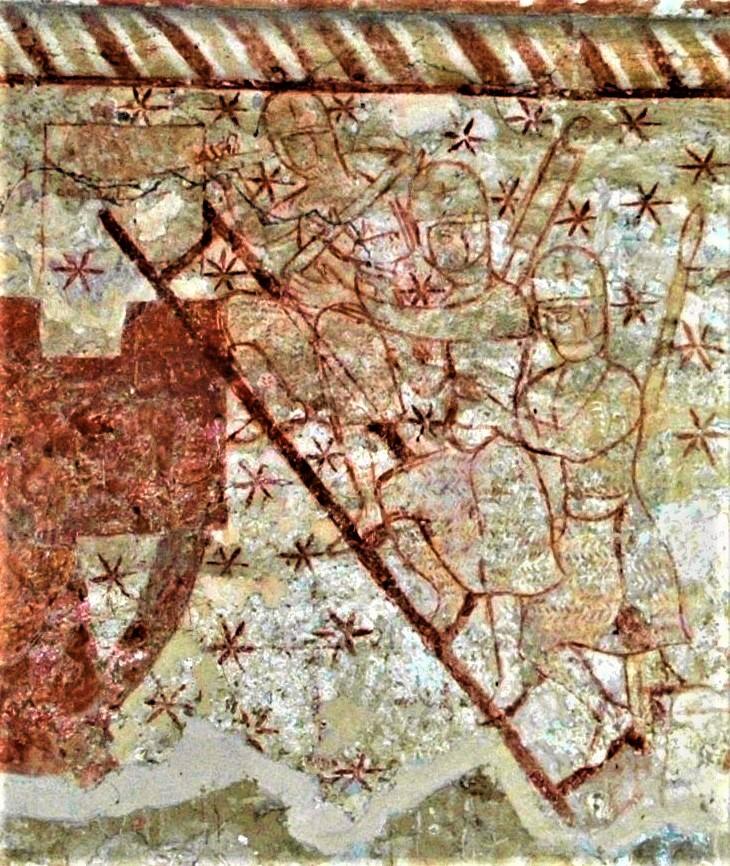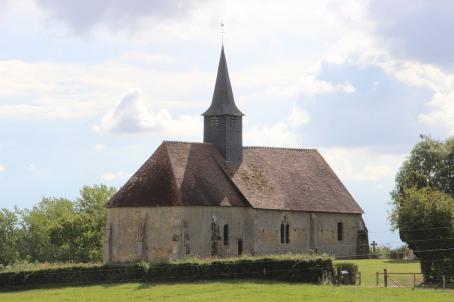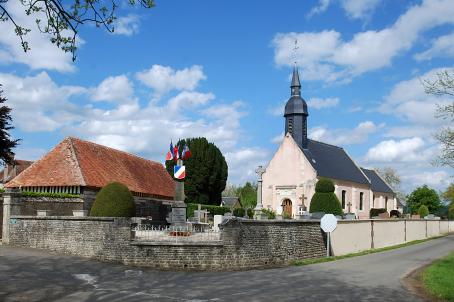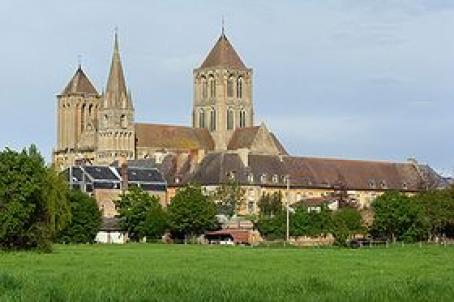Chapel of Saint-Marie-aux-Anglais
Isolated in the Normandy countryside, this chapel is reminiscent of a hermitage. It has remained intact over the centuries, just as its master imagined it would when it was first constructed in around 1140. It is of Norman style. In the 13th century it was decorated with a painted mural that taught the life of Jesus and the Virgin, the murder of Thomas Beckett and an attack on a castle by neighboring peasants. Time has damaged it but there are still 100 m² of pictorial scenes as well as two beautiful recumbents of the thirteenth century.
About this building
It is not easy to find the chapel of Sainte-Marie-aux-Anglais, hidden at the edge of the River Viette and a very narrow road; but it is by being hidden that the church has remained practically unchanged. It was designed around 1150 and the nave was built, reserving the site, while the choir was only added later, around 1220.
The interior walls were then entirely covered with paintings, which can still be seen in more or less good condition, according to their position in the chapel. In the choir, they illustrate the new testament: the life of Jesus and his mother Mary. One notable painting shows them at a supper, a very rare representation during the Middle Ages. The choir also includes a series of works of unique months in Normandy. The nave includes paintings of more varied inspiration: feast of Herod, the siege of a castle (perhaps during the crusades), the murder of Thomas Beckett, and scenes of knights fighting. The set of paintings extends over 100m ², and it is the largest painted surface from this period in Normandy. Fortunately, the non-religious scenes escaped the 'censorship' of the counter-reformation that overlooked such a discreet chapel.
The choir includes two contemporary recumbent paintings and two capitals illustrating the acceptance and rejection of the divine word. The chapel is purely Norman style, with simple and austere lines, that speak of Cistercian inspiration. The choir has two bays, while the nave has three. There is a beautiful western entrance portal that is surmounted by a molding ring, while the north door overlooks the baptistery and reflects the central portal. The South door leads to the choir.
The gable walls are decorated with a series of modillions with grimacing human heads, animal heads and a small figure showing her buttocks! The chapel is in a beautiful setting, surrounded by meadows, cows, horses and a 16th century mansion, all hidden by a curtain of trees.






